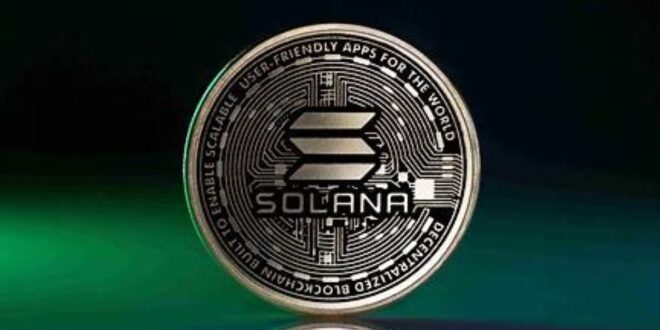In a revelation that’s turning heads across the crypto community, newly released documents suggest that the U.S. Treasury may be holding digital assets beyond the usual suspects — and among them, whispers of exposure to a Solana-based Layer-2 protocol are causing a stir.
The Disclosure That Sparked It All
The story broke following a Freedom of Information Act (FOIA) request that led to the partial disclosure of the Treasury’s digital asset holdings as part of its broader experimental blockchain initiatives. While most expected mentions of Bitcoin (BTC), Ethereum (ETH), and stablecoins used for testing programmable payments, one entry stood out: a reference to “SOL-L2-based infrastructure credits.”
That line has fueled speculation that the Treasury may be piloting or indirectly holding tokens associated with a Solana Layer-2, possibly through a sandbox program or collaboration with private contractors.
What Could “SOL-L2 Infrastructure Credits” Mean?
Crypto sleuths and analysts are offering several interpretations:
- Test Tokens: Some believe the Treasury is working with Solana devs to simulate real-world transactions using testnet tokens on a Solana L2 rollup.
- Indirect Holdings: The “credits” could reflect partnerships with blockchain-as-a-service providers using Solana L2s under the hood.
- Experimental Settlement Layer: There’s a chance the Treasury is exploring Solana’s scalability for cross-border payments, CBDC pilots, or tokenized asset transfers.
“It’s unlikely they’re buying memecoins on a Solana L2,” joked analyst Ava Martinez, “but this does show that government interest in high-performance chains is real.”
Why This Matters
If confirmed, this would mark the first known interaction between a U.S. federal agency and a Layer-2 solution on Solana — a blockchain previously perceived as more DeFi- and NFT-centric than institutionally aligned.
It could also signal a broader shift in how the government is approaching blockchain experimentation:
- Moving beyond Ethereum-based pilots
- Exploring chains with faster finality and lower fees
- Testing modular infrastructure through rollups and L2s
This development aligns with the Treasury’s recent Digital Infrastructure Task Force initiative, aimed at assessing the technical capabilities of various blockchain systems for future public-sector applications.
The Crypto Community Reacts
The reaction online was swift and spicy. On Crypto Twitter, the hashtag #SolanaL2Gov trended briefly, with users speculating everything from bullish insider signals to tinfoil-hat theories about Solana becoming the next U.S. government blockchain of choice.
Not everyone is convinced, however.
“Without full transparency, we’re still guessing,” noted crypto researcher James Osei. “But the fact that Solana is even part of the conversation is a big leap from where we were a year ago.”
The Treasury has not confirmed any direct token holdings on public Solana chains, but further disclosures may come as part of quarterly reports tied to blockchain innovation spending.
For now, the crypto world is left watching, speculating — and refreshing block explorers.
 Business Sandesh Indian Newspaper | Articles | Opinion Pieces | Research Studies | Findings & News | Sandesh News
Business Sandesh Indian Newspaper | Articles | Opinion Pieces | Research Studies | Findings & News | Sandesh News



